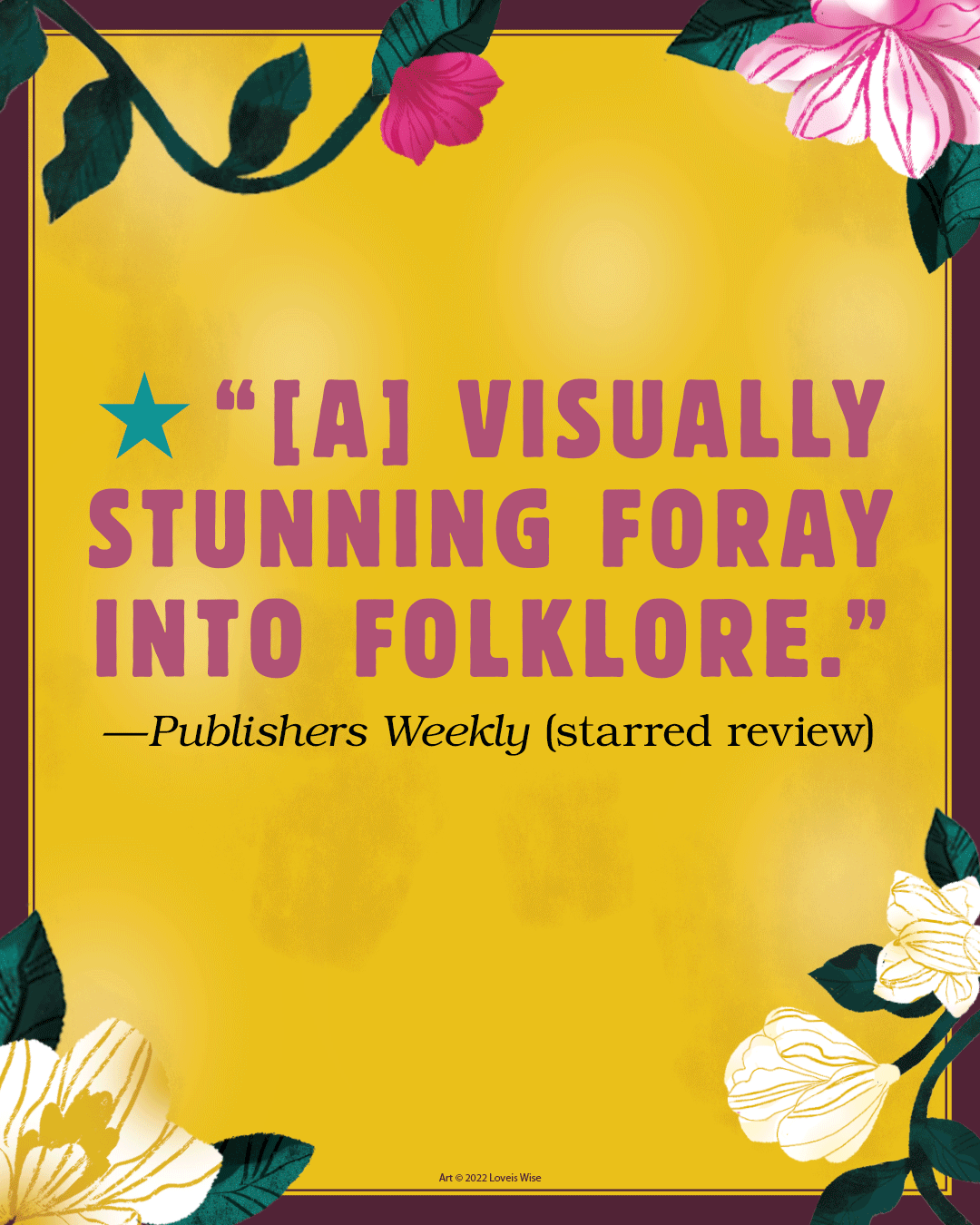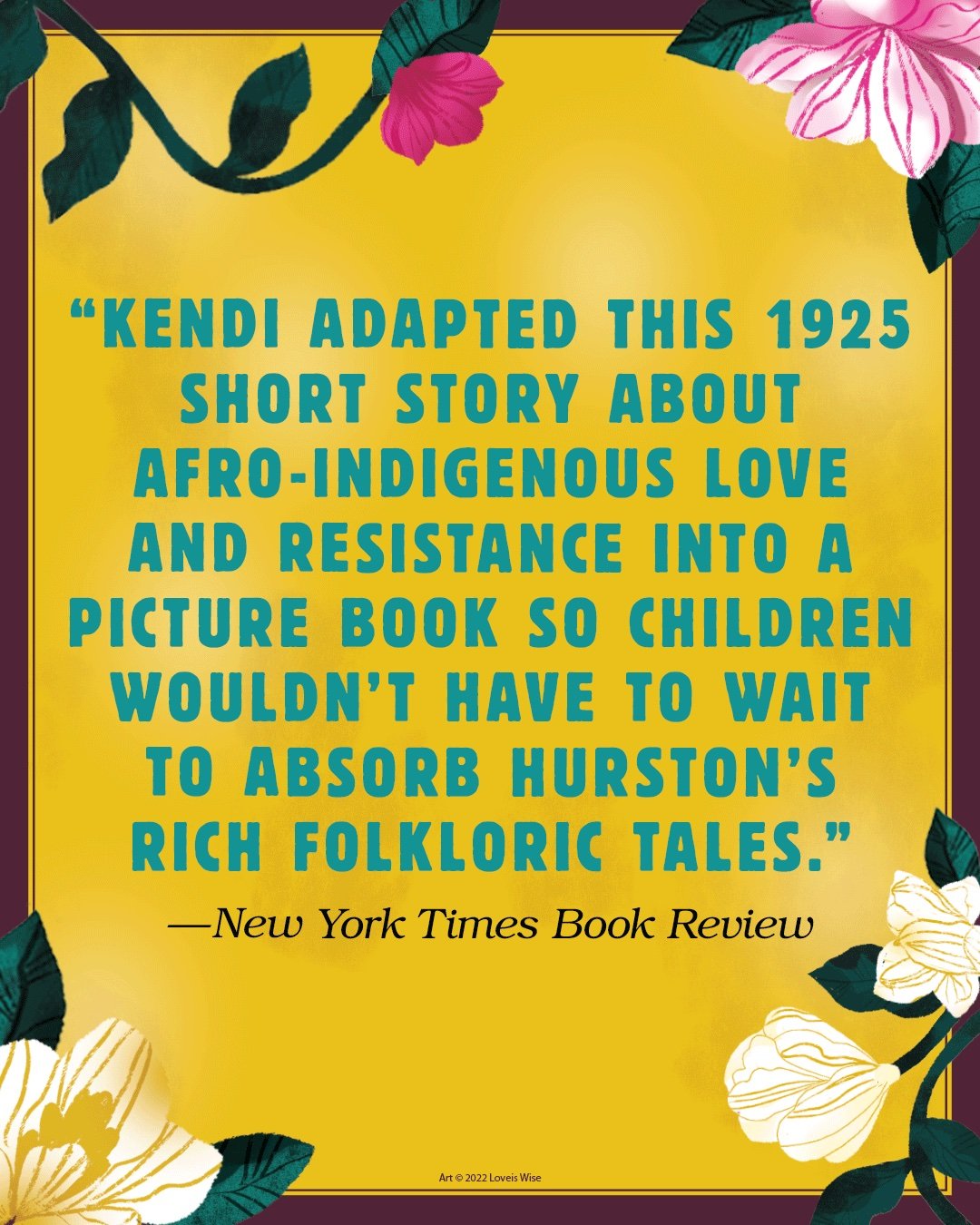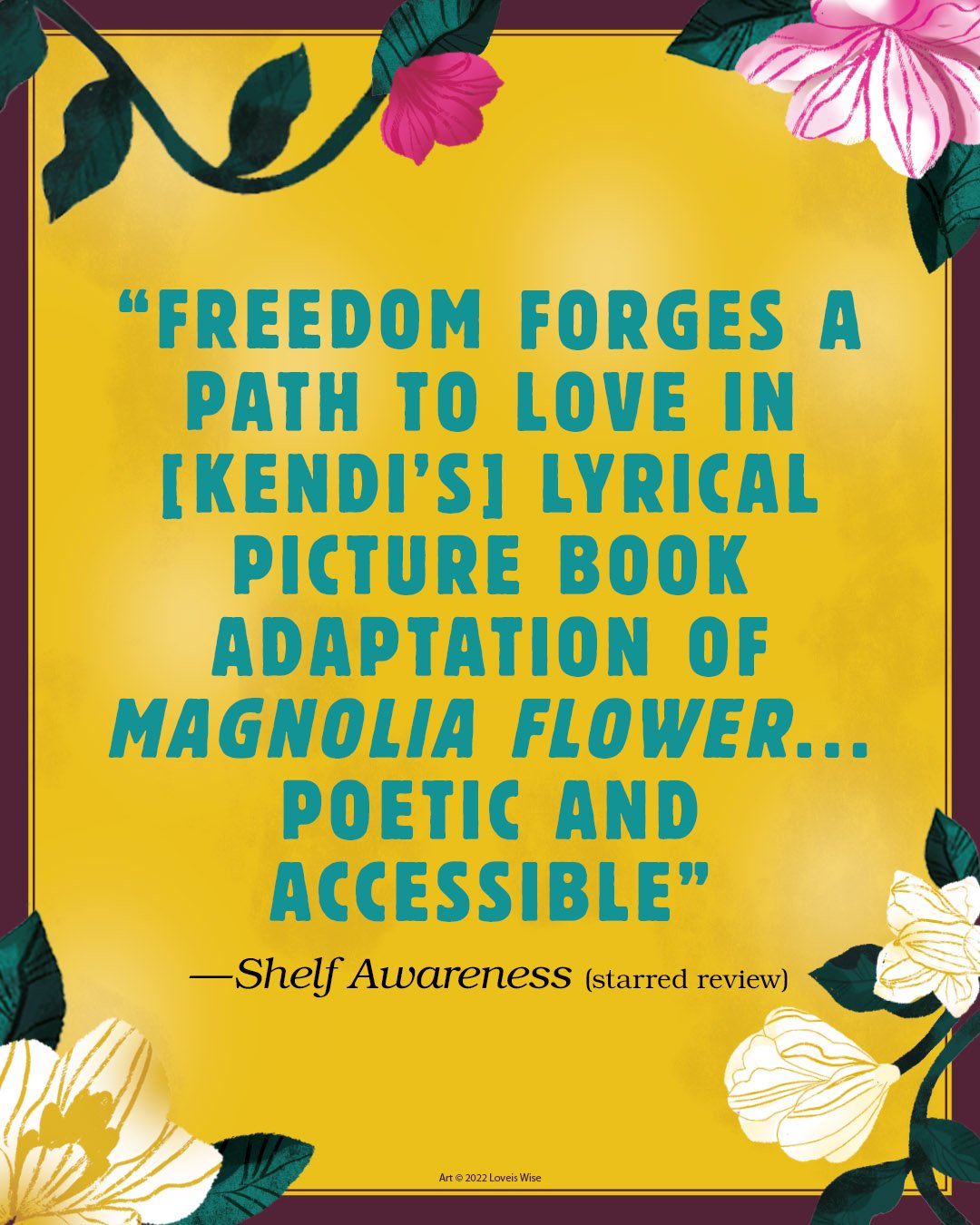Magnolia Flower
From beloved African American folklorist Zora Neale Hurston comes a moving adaptation by National Book Award winner Ibram X. Kendi. Magnolia Flower follows a young Afro- Indigenous girl who longs for freedom and is gorgeously illustrated by Loveis Wise.
Born to parents who fled slavery and the Trail of Tears, Magnolia Flower is a girl with a vibrant spirit. Not to be deterred by rigid ways of the world, she longs to connect with others, who too long for freedom. She finds this in a young man of letters who her father disapproves of. In her quest to be free, Magnolia must make a choice and set off on a journey that will prove just how brave one can be when leading with one’s heart.
The acclaimed writer of several American classics, Zora Neale Hurston wrote this stirring folktale brimming with poetic prose, culture, and history. It was first published as a short story in The Spokesman in 1925 and later in her collection Hitting a Straight Lick with a Crooked Stick (2020).
Tenderly retold by #1 New York Times bestselling and National Book Award-winning author Ibram X. Kendi, Magnolia Flower is a story of a transformative and radical devotion between generations of Indigenous and Black people in America. With breathtaking illustrations by Loveis Wise, this picture book reminds us that there is no force strong enough to stop love.
ORDER NOW
BEST OF 2023 LIST
PRESS
PRAISE
“Deeply committed to sharing Hurston’s writing with young readers, Kendi writes in his author’s note about the elements of Black folklore in the story, such as making nature a speaking character. And, as he stresses in a historical note, the tale is a powerful example of Black and Native resistance—an aspect of history that far too often goes undiscussed. . .
An artfully rendered tale of life and love that also conveys an essential but often overlooked chapter in U.S. history. ”
“Kendi adapted this 1925 short story about Afro-Indigenous love and resistance into a picture book so children wouldn’t have to wait to absorb Hurston’s rich folkloric tales.”
“Both the lyrical text and the flowing digital illustrations let the theme of love running through Hurston’s stories shine. Wise’s. . .brightly colored images capture the beauty of the forest and the love between Magnolia Flower and John. In his appended author’s note, Kendi explains his intention behind adapting a short story for adults as a picture-book text: “The earlier we expose our children to our literary treasures—to our literary legends like Hurston—the better.””
“Kendi (Antiracist Baby) adapts a short story by Hurston (1891–1960) in this visually stunning foray into folklore, as related by a mighty river to a babbling brook. . .Digital illustrations from Wise (The People Remember) make for a bountiful, nature-centered accompaniment to this romance set against the changing landscape of freedom for Black and Indigenous peoples. A historical note and author’s note contextualize themes of oppression, resistance, and love, as well as Hurston’s expertise in Black folklore.”
“The book is a true launchpad for recentering the narrative of U.S. history, honoring Zora Neale Hurston and her legacy, and building cultural awareness and sensitivity.”
“Freedom forges a path to love in National Book Award-winner Ibram X. Kendi’s lyrical picture book adaptation of Magnolia Flower, a short story by Zora Neale Hurston first published in 1925.
The Brook is desperate for a story and the Mighty River, knowing “brooks must be humored,” tells one. “Long ago,” the Mighty River begins, strong Bentley fled enslavement. “Soon a whole village of runaways” grew around him and he married “Swift Deer,/ a Cherokee woman who had fled/ her own trail of tears.” They named their daughter Magnolia Flower “for she came at the time of the flowers opening.” The girl grows as the Civil War rages, falls in love and eventually defies her father, fleeing down the Mighty River with her beloved. Nearly 50 years later, the lovers return to the River to find the spot where the River meets the Brook.
Kendi. . .uses poetic and accessible prose to restate Hurston’s historical truths. Kendi’s adaptation retains a strong presence of the natural world, another prominent element in Hurston’s writing. His textual personification of the surrounding environment is delicately and subtly conveyed through Loveis Wise’s illustrations. . .Their gentle digital illustrations have a vivaciousness that reinforces the depth of Hurston’s characters as well as the vastness of the world encompassing them.”














